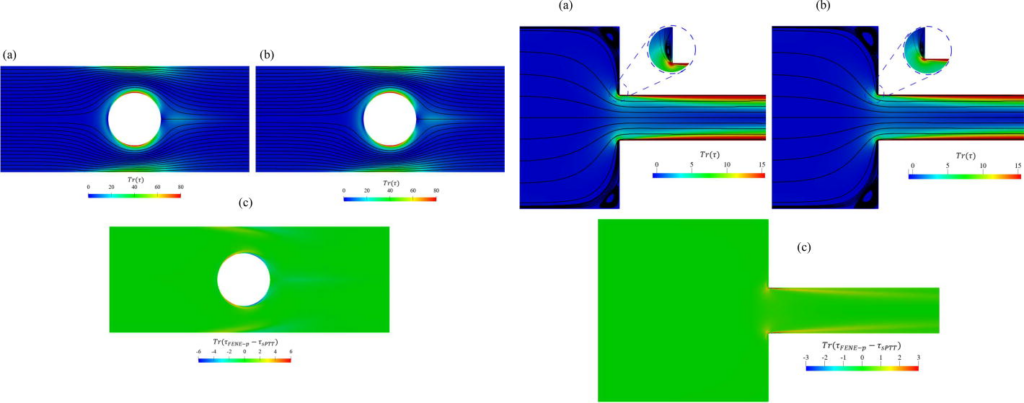PHYSICS OF FLUIDS Vol. 34, 033110 (2022)
M. Davoodi, K. Zografos,P. J. Oliveira, R. J. Poole (doi.org/10.1063/5.0083717)
For many commonly used viscoelastic constitutive equations, it is well known that the limiting behavior is that of the Oldroyd-B model. Here, we compare the response of the simplified linear form of the Phan-Thien–Tanner model (“sPTT”) [Phan-Thien and Tanner, “A new constitutive equation derived from network theory,” J. Non-Newtonian Fluid Mech. 2, 353–365 (1977)] and the finitely extensible nonlinear elastic (“FENE”) dumbbell model that follows the Peterlin approximation (“FENE-P”) [Bird et al., “Polymer solution rheology based on a finitely extensible bead—Spring chain model,” J. Non-Newtonian Fluid Mech. 7, 213–235 (1980)]. We show that for steady homogeneous flows such as steady simple shear flow or pure extension, the response of both models is identical under precise conditions. The similarity of the “spring” functions between the two models is shown to help understand this equivalence despite a different molecular origin of the two models. We then use a numerical approach to investigate the response of the two models when the flow is “complex” in a number of different definitions: first, when the applied deformation field is homogeneous in space but transient in time (so-called “start-up” shear and planar extensional flow), then, as an intermediate step, the start-up of the planar channel flow; and finally, “complex” flows (through a range of geometries), which, although being Eulerian steady, are unsteady in a Lagrangian sense. Although there can be significant differences in transient conditions, especially if the extensibility parameter is small, under the limit that the flows remain Eulerian steady, we once again observe very close agreement between the FENE-P dumbbell and sPTT models in complex geometries.

